Val di Sole boasts thousands of years of history. The valley was settled by the Celts, followed by the Rhaetians and then the Romans, a few thousand years before the birth of Christ. The Franks came through here, as did the Prince-Bishops of Trent and then the Austro-Hungarians and in the nineteenth century the valley also saw the birth of irredentism movements. During the First World War, Val di Sole was on the front line, and following the Second the phenomenon of emigration accelerated. With so much history behind it, Val di Sole boasts a large number of rural buildings, forts, castles, palaces and churches, some of them custodians of real «hidden treasures».
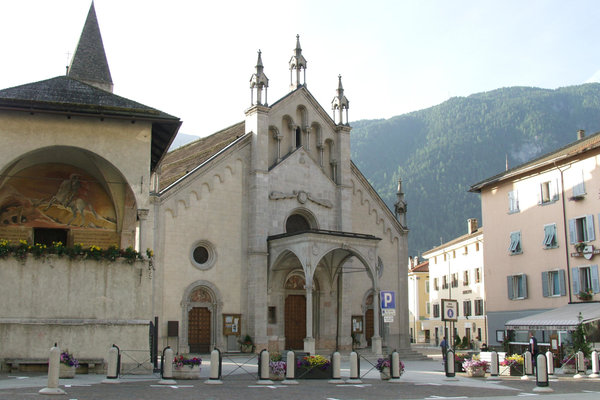
The main town in Val di Sole was founded in ancient times, possibly during the Roman era. Its role as a parish is documented as long ago as 1178, but probably dates back to Longobard and Carolingian domination (seventh to ninth centuries). Today’s town is the result of the overlapping of historic buildings and those built after the fire in 1892, which did not touch the Parish Church of Santa Maria Assunta. This stands in the centre of the town, in a square that for centuries was used as the parvis and cemetery and, in front of its Romanesque-Gothic façade, there is a slender building dedicated to Saint Valentine.
On the western edge of Malé, incorporated into an administrative building, the Church of San Luigi can be seen. Close to the main square is the Museo della Civiltà Solandra (Museum of Solandra Civilisaton) which houses a permanent exhibition of cultural and work traditions in Val di Sole.
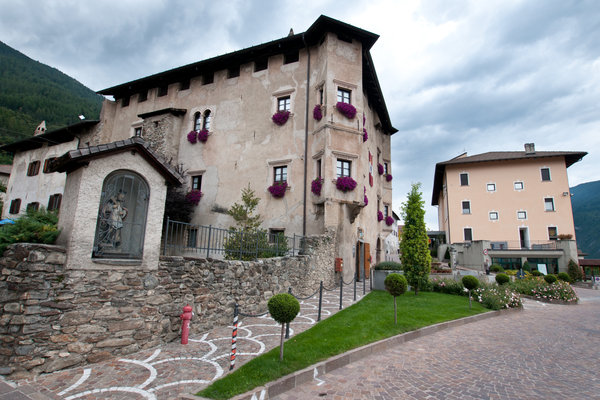
In the centre of the town of Terzolàs stands the huge noble mansion known as Torraccia, which belonged to the Malanotti family and was built at the turn of the sixteenth century. Commissioned between 1573 and 1579 by Francesco Enigler, its characteristic angular protrusions and large rooms decorated with frescoes from that period, make it an important example of a Late Renaissance noble home. The hall on the second floor is embellished with a seventeenth-century frescoed frieze featuring the Malanotti coats of arms. Between 1652 and 1665, the magistrate Bernardino Malanotti di Caldes in fact had work done to extend and refurbish the building.
From Malé, a road with sweeping hairpin bends leads to the characteristic medieval towns of Bolentina and Montés (1,200 m asl). As well as the magnificent scenery, the sixteenth-century Church of San Valentino is also worth seeing here (open during religious functions).
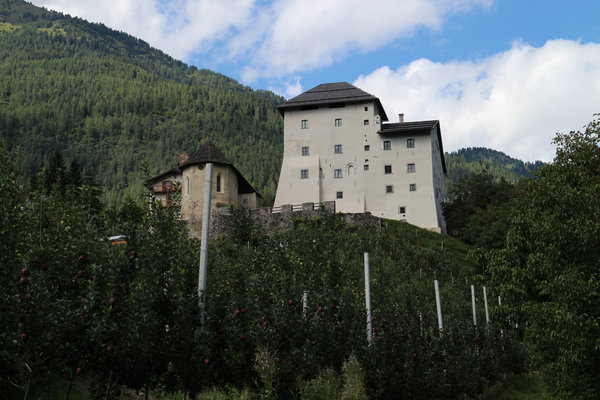
A short distance above Samoclévo, a small village in the municipality of Caldés built around the Church of San Vigilio, the ruins of the Rocca fortress can be glimpsed. Of this primitive building only the outer walls with their embrasures still remain, together with the mighty square keep. The Rocca dates back to before the thirteenth century and controlled the imperial road in Val di Sole, which was higher up than today's road.
Three bell towers are the first things that can be seen of Caldés. The oldest is in the town square and it dates back to the thirteenth century. The «horsemen's road» or «strada dei cavalieri» is characteristic due to some old buildings that were once inhabited by the local country nobility. Coats of arms and stone gateways testify to feudal times, as does the castle on the western edge of the town. Castel Caldes was built later, between the thirteenth and seventeenth centuries, and guards ancient legends of unrequited love. Inside, it has huge rooms and stone staircases and also a chapel with frescoes of remarkably fine artistic quality.
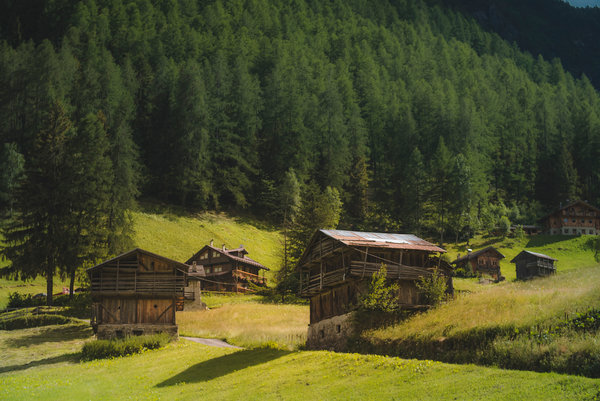
One of Val di Sole’s side valleys, easy to reach from Malé, Val di Rabbi preserves all the wild appearance of past times. Its harsh slopes are covered with conifer woods that reach down to the towns and villages and it boasts a splendid abundance of streams and rivers. The groups of houses on the valley sides, particularly those with a sunny exposure, still have that scattered look that is more Tyrolean than Trentino. The people in this valley are, however, definitely Solandro: Rabbi, with its valuable pastures for mountain grazing and building timber, was settled in the thirteenth century by people from the nearby towns in the lower Val di Sole.
Practically isolated for a long time, this valley still has its own archaic dialect and a more meditative lifestyle than the rest of this area. Pracorno, San Bernardo and Piazzola were settled in historic eras, and there are also lots of tiny hamlets, featuring some of the most original local legacies: the masi. These small homes built in stone and wood with larch shingle roofs serve a variety of purposes and they dot the fields as visual evidence of a culture that has successfully teamed the useful with the ornamental.
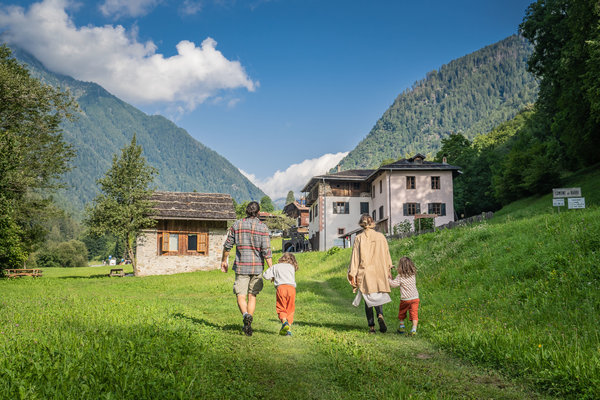
On foot from Malè, following signs for Pondàsio brings you to the Fucina Marinelli (Marinelli Forge), one of the few examples in the Alps of an intact, still functioning water-powered forge. The closeness of Pondàsio to the Rabbiés river meant that many of its inhabitants were millers and blacksmiths, with evidence in the form of ruined watermills and an old forge that still functions, powered by the water, where forging and metal-working is carried out using traditional methods. This forge was first documented in writing in 1880, when it was purchased by the Marinelli family, but it was built at least two centuries previously.
From the forge you can reach Molino Ruatti (Ruatti Mill), at the start of Val di Rabbi, just before Pracorno. This is a real museum of the art of milling. Founded at the turn of the nineteenth century, this historic mill was still operative until the mid-twentieth century. Today it is one of the very few examples still operative, a living museum that show what the real work environment and family life was like, with a display of mill equipment in excellent condition. It is valuable evidence of an ancient art and of lifestyles that have today disappeared.
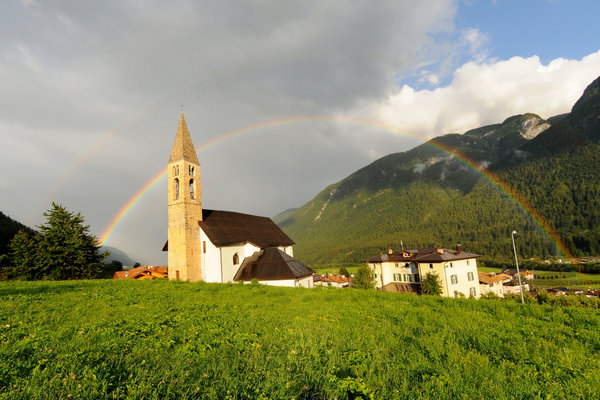
Leaving Malé for Tonale, the level road brings you to Croviana, a hamlet with distant origins, famous in the Middle Ages because it was where the tithes paid by the Solandro people to the Prince-Bishop of Trent were collected. Standing proud at the entrance to this hamlet is the palace-castle of the Pèzzen family, a small noble family originally from Valtellina, who came here during the fifteenth century for the iron mines. Just a little further on, there is the tiny church of San Giorgio. From Croviana, a small road through the fields leads to Monclàssico, another ancient hamlet. There are several noble houses here (like the one owned by the Valenti family) and examples of late-medieval architecture (the so-called pòrteghi or porches and corners or Amblài). Standing over the houses is the Church of San Vigilio, with its remarkable baroque altars. Continuing a little further along this quiet road you will come to Pressón and, crossing over the River Noce, to Dimaro, on the way to Campiglio and Val Rendena. This was the only road and tolls had to be paid at the Casa del Dazio, the tollhouse managed by the noble de Mazzis family. The Church of San Lorenzo still has frescoes dating back to the late fifteenth century, refined work by the Baschènis brothers, and wooden baroque altars.
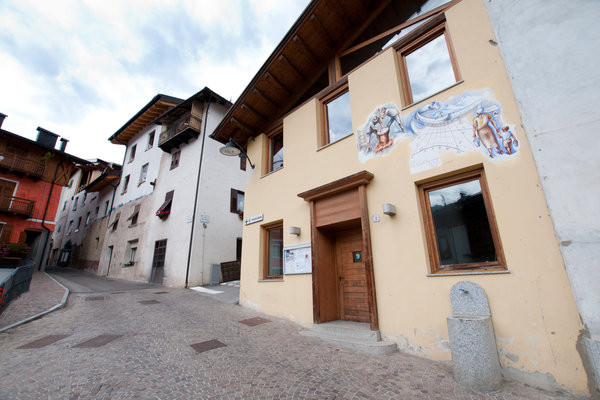
Monclàssico and Pressón lie in the middle of Val di Sole, and they are famous throughout Italy and internationally for their artistic sundials. These two towns are a real open-air museum dedicated to the local area, art and time, a wonderful visitor experience that can be enjoyed all year round thanks to a series of guided visits that introduce the variegated world of art and also explore how sundials work.
They offer plenty of fascinating things to see: reflective sundials that tell the time even when facing north; panoramic sundials, like the one in Piazza della Fontana, which uses the lines of the mountains as an enormous dial for reading the time, capable of indicating the precise point the sun comes up and goes down every day; «human» sundials, where the gnomon must be moved according to the seasons to mark the exact time. There are also plenty of sundials featuring the most diverse of techniques and materials: sculpted, painted, engraved in glass and with details added in ceramic, metal and even fossils.
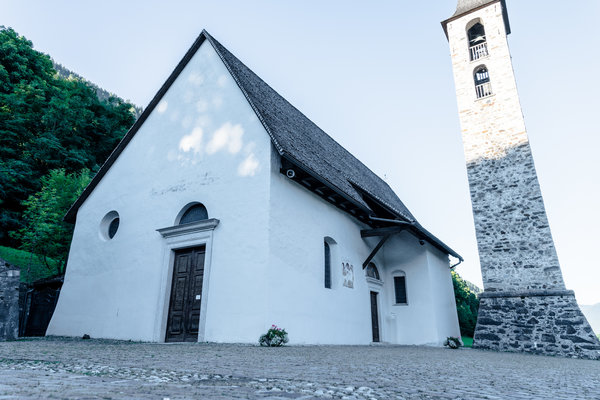
About halfway between Mostizzòlo bridge and the Tonale Pass, Commezzadura embraces a group of villages with ancient names, some pre-Roman, other medieval: Deggiano, Mastellina, Mestriàgo, Almazzàgo, and Piano. Each one has its own little church and the most important is the Church of Sant'Agata, which dates back to the end of the fifteenth century. A large fresco of Saint Christopher was painted on its façade in 1495 and he looks out over the road. In the presbytery and on the apse, Simone Baschènis, who belonged to a fifteenth/sixteenth-century family of travelling painters, added frescoes of biblical figures and the story of Saint Agatha, the patron saint of this church.
A couple of kilometres further on, you come to Mezzana. The town church dedicated to the Saints Peter and Paul has wonderful seventeenth-century altars. Twenty metres or so beyond Mezzana is Róncio, a panoramic balcony with vies of the mountains and the valley. Practically uninhabited, this miniscule village has a lovely chapel dedicated to the Saints Romedius and Barbara: the highly ornate altar was by the Ramus and Bezzi artisans and dates back to the seventeenth century.
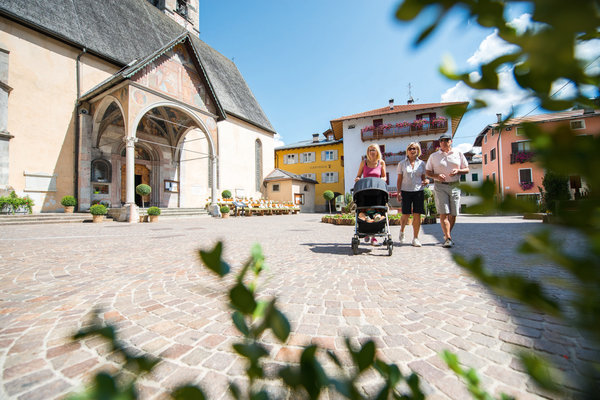
In the upper Val di Sole, on the right bank of the River Noce, stands one of this area’s most authentic examples of holy art: the Church of the Natività di Maria in Pellizzano, dedicated to the birth of the Virgin Mary. It is set in a town with remarkable historical value that dates back to the late Medieval and Renaissance eras, evidenced by noble homes and coats of arms over the stone gateways. The church itself was decorated by a series of generations of fresco artists (the Baschènis family in particular, from 1477 to 1533): both the porch and the wall at the entrance are covered with paintings. The most precious nucleus in this church is made up of five altars, finely sculpted and gilded, with their ancient altar pieces. At the head of the left-hand nave stands the Altar of the Disciplines, with a fresco by C. Vallorsa (1571), depicting the local Compagnia dei Battuti, a secular confraternity. Pellizzano church also boasts a wealth of precious furnishings. Outside the church, overlooked by its majestic bell tower and behind delightful wrought iron railings, is a shrine to the Madonna with Child, a late medieval work that is also known as the «Madonna of the drowned», whose worship is strewn with legends.
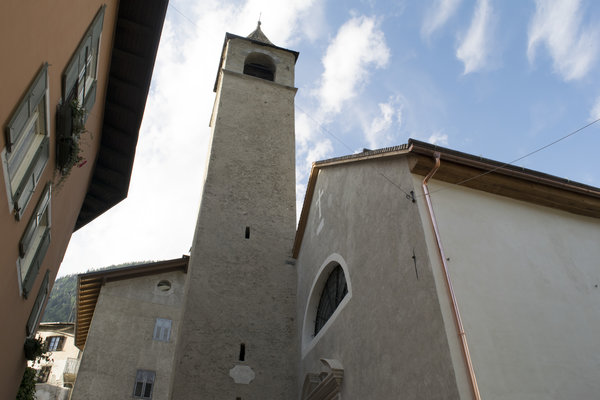
Not far from Ossana, along the road that leads to the Tonale Pass, Cusiano nestles between the side of the mountain and the River Noce. In the centre of this village with Rhaetian origins (traces of pre-Roman fortified villages have been found here) stands the lovely little church dedicated to Saint Mary Magdalene.
Preceded by an unusual chapel in the form of an open niche dedicated to Saint Rocco, patron saint of the plague-stricken, it houses a cycle of frescoes painted at the end of the fifteenth century by Giovanni and Battista Baschènis, from Averara branch of the family in upper Val Brembana (Bergamo). These depict, in very popular narrative tones and on panels with captions in fifteenth-century Italian, the legend of Mary Magdalene and her siblings Lazarus and Martha. The coats of arms of Trento, Tyrol and the de Federici di Ossana, lords of the castle of San Michele in Ossana mark the points where the keystones meet the ribs on the vaults.
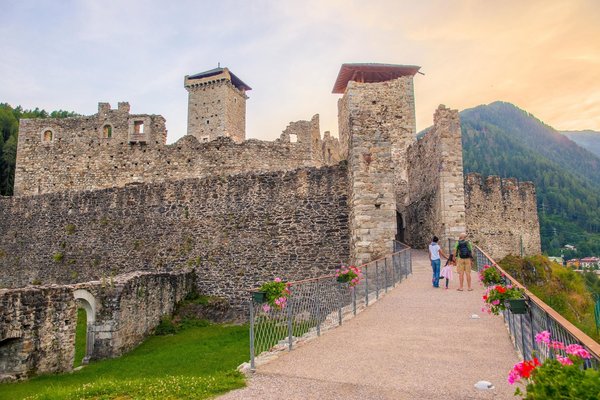
It is highly likely that the Castle of San Michele in Ossana dates as far back as the era of the Longobards (sixth-eighth century) but it was first documented in writing in 1191. Various noble families succeeded one another as its inhabitants. The castle enjoys a formidable position: a rocky outcrop that is almost inaccessible on three sides forms the base for this recently reinforced construction. The square keep provides a visual reference point for the whole of the upper Val di Sole and the castle has been renovated and is open to the public. The town of Ossana, a medieval parish, is home to the Church of San Vigilio, the bishop who brought Christianity to Trentino in the fourth and fifth centuries.
Just to the east of the town, at the foot of Colle Tomino hill and the eighteenth-century Church of Sant'Antonio, lies the former Austro-Hungarian war cemetery, which gave honourable burial to more than 1,400 soldiers who died on the Tonale front line during the First World War. This plateau, where the monument to the Kaiserschütze by Othmar Schrott-Vorst, 1917, stands, has now become the Parco della Pace (Park of Peace) as a sign of fraternity between peoples.
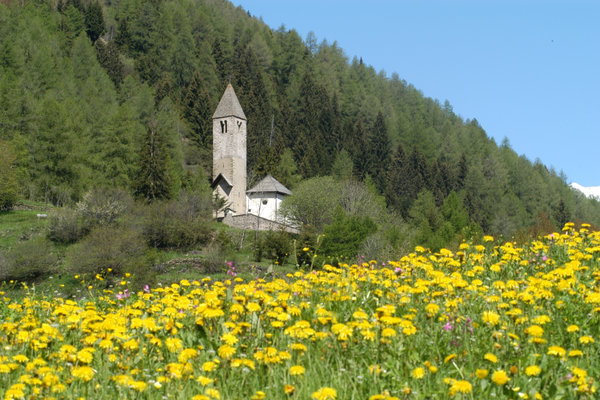
In Comàsine, once famous for its iron mines, a little lane leads to the plain where the lovely Church of Santa Lucia stands. This holy building dominates the old cemetery and offers enchanting views of the valley and surrounding mountains. The Chapel of Sant'Antonio is in Celledizzo, entirely decorated by frescoes by the Baschènis brothers (1473). Almost right next door to the town is the village of Cógolo, the ancient Church of Santi Filippo and Giacomo, its exterior decorated with remarkable frescoes and the small palazzo that belonged to the Migazzi family. Along the road to Malga Mare, just beyond Cógolo, there is the small Church of Pegaja, which dates back to before the sixteenth century and is all that remains of the village of the same name, perhaps destroyed by a landslide in the fifteenth century. Saint Christopher looms large on the outside wall, the patron saint of travellers and protector against unexpected death of those who worship him devoutly. The Church of San Giorgio in Peio Paese has some beautiful sculpted and gilded wooden altar pieces, the oldest of which dates back to the sixteenth century. The bell tower is decorated with a giant fresco of Saint Christopher by the Baschènis brothers, from 1484.
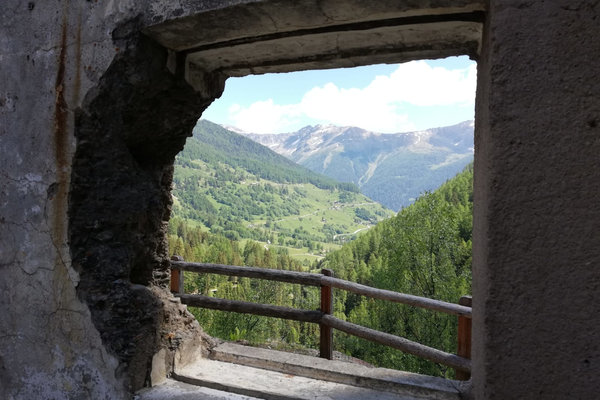
In Peio Paese you can visit the Museo della Guerra Bianca (White War Museum) «Peio 1914-1918 - War at the Door», a mixed collection of relics, weapons and photos from the First World War. Just a few minutes from the town a tree-covered hill called the Dosso di San Rocco acts as a treasure chest for the chapel of the patron saint of the plague-stricken (early sixteenth century) and for the Austro-Hungarian cemetery. More than a hundred soldiers of different nationalities are buried here, the fallen from the battles during the Great War (1914-1918) on the front, which was very close to this site in what was called the White War. From San Rocco, at the start of Val del Monte, the ruins of a fortalice dating back to the early twentieth century can be seen. Called Forte Barba di Fior, it is easy to reach along the road that continues beyond the Pian Palù dam. Then turn off onto a path that crosses the River Noce and follow its winding route up to this hefty military construction. Opposite, on the other side of the valley, you can still walk up the military track that went up to the Vegaia, the site used by the Austro-Hungarians as their camp during the war.
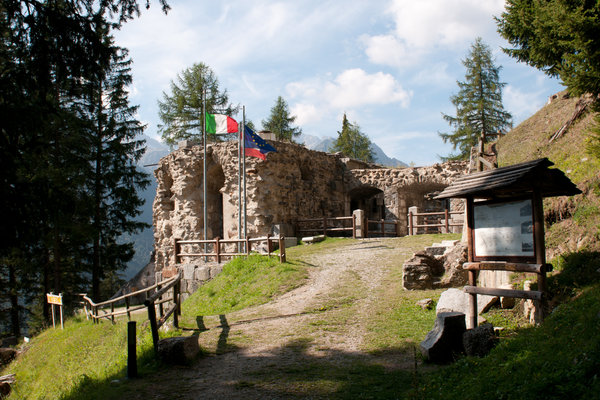
The Tonale Pass, overlooked by the old San Bartolomeo Hospice, owes its importance to the fact that, for centuries, it marked the border between the Prince-Bishopric of Trent and Lombardy, in various periods in history also the Duchy of Milan, the Republic of Venice, the Lombardo-Venetian Kingdom and Kingdom of Italy. For more than three years, the First World War was fought up here by the best of the two armies’ troops, a battlefield that brought heroism and great pain. The Austro-Hungarian side (which also included Trentino) had been preparing for war for a very long time. Various forts had been built in a pincer arrangement and equipped with weapons as a defensive belt against invasion. These forts stood a short distance behind the border: Forte Pozzi Alti (or Presanella), Forte Velón, Forte Mèro, Forte Strino and Forte Zaccarana, this latter the most modern and best equipped of them all. Today the best preserved fort is Forte Strino and it is also easy to reach from the valley road that runs past it. Built from 1860, it blocked the road from the Tonale Pass and also defended against enemy incursions.